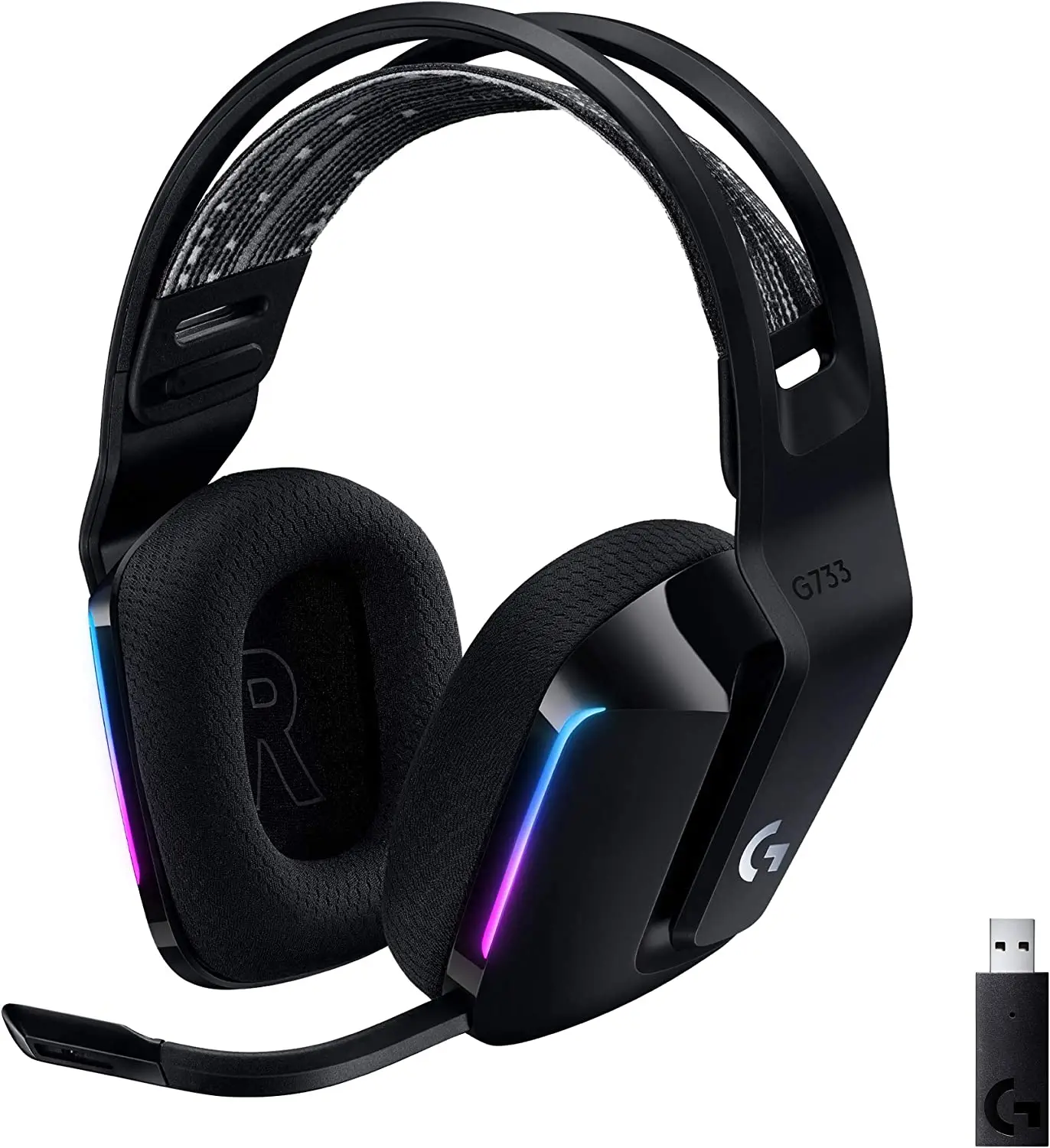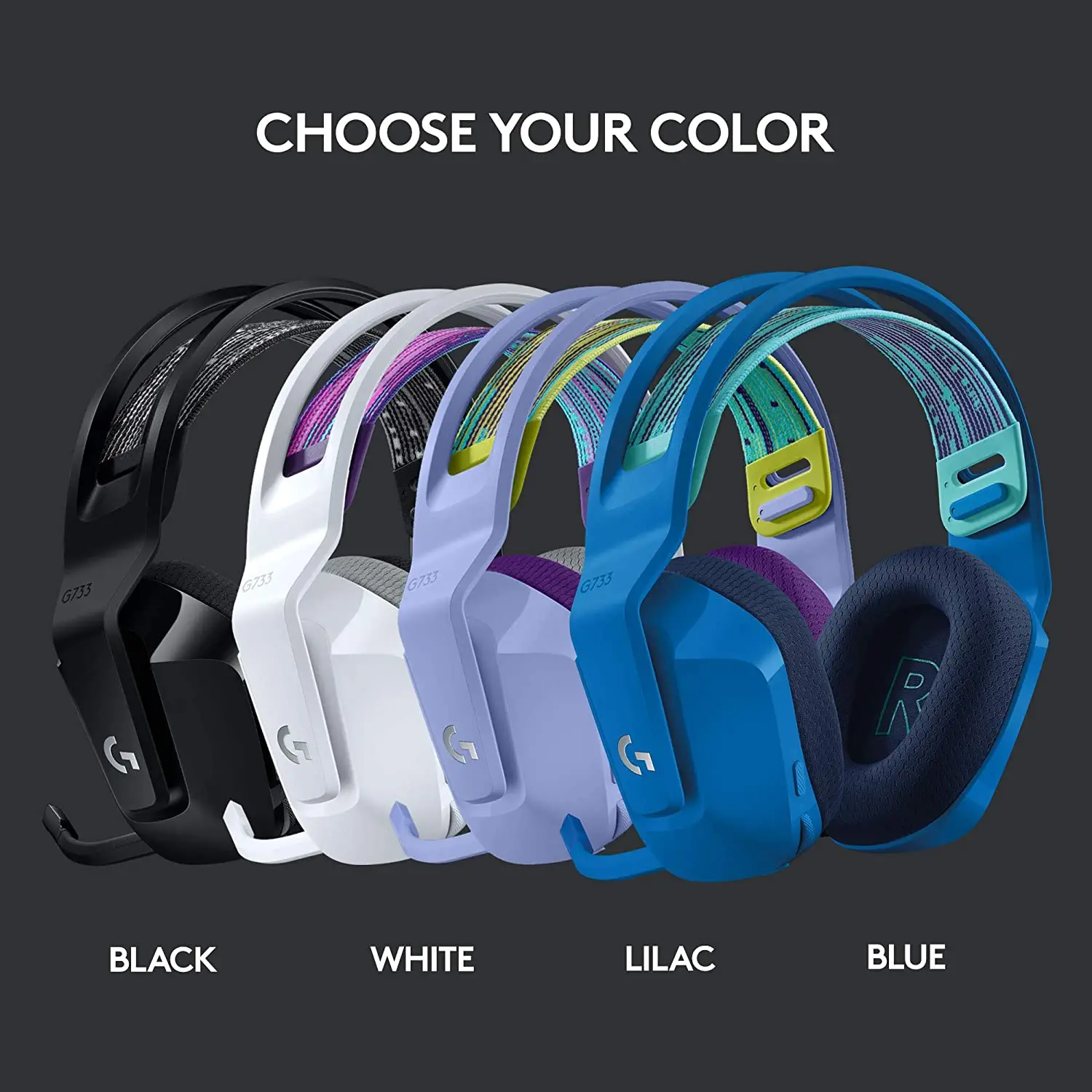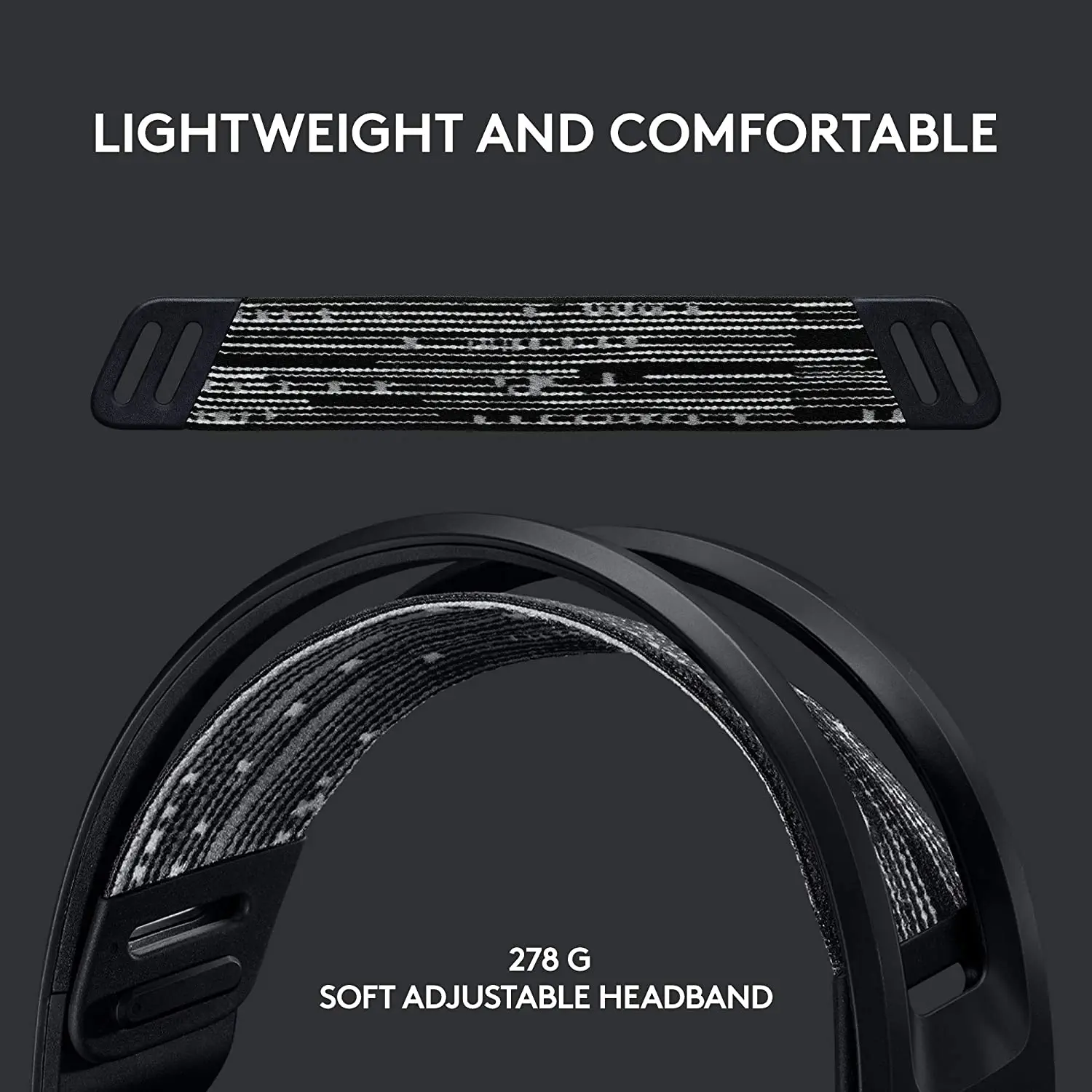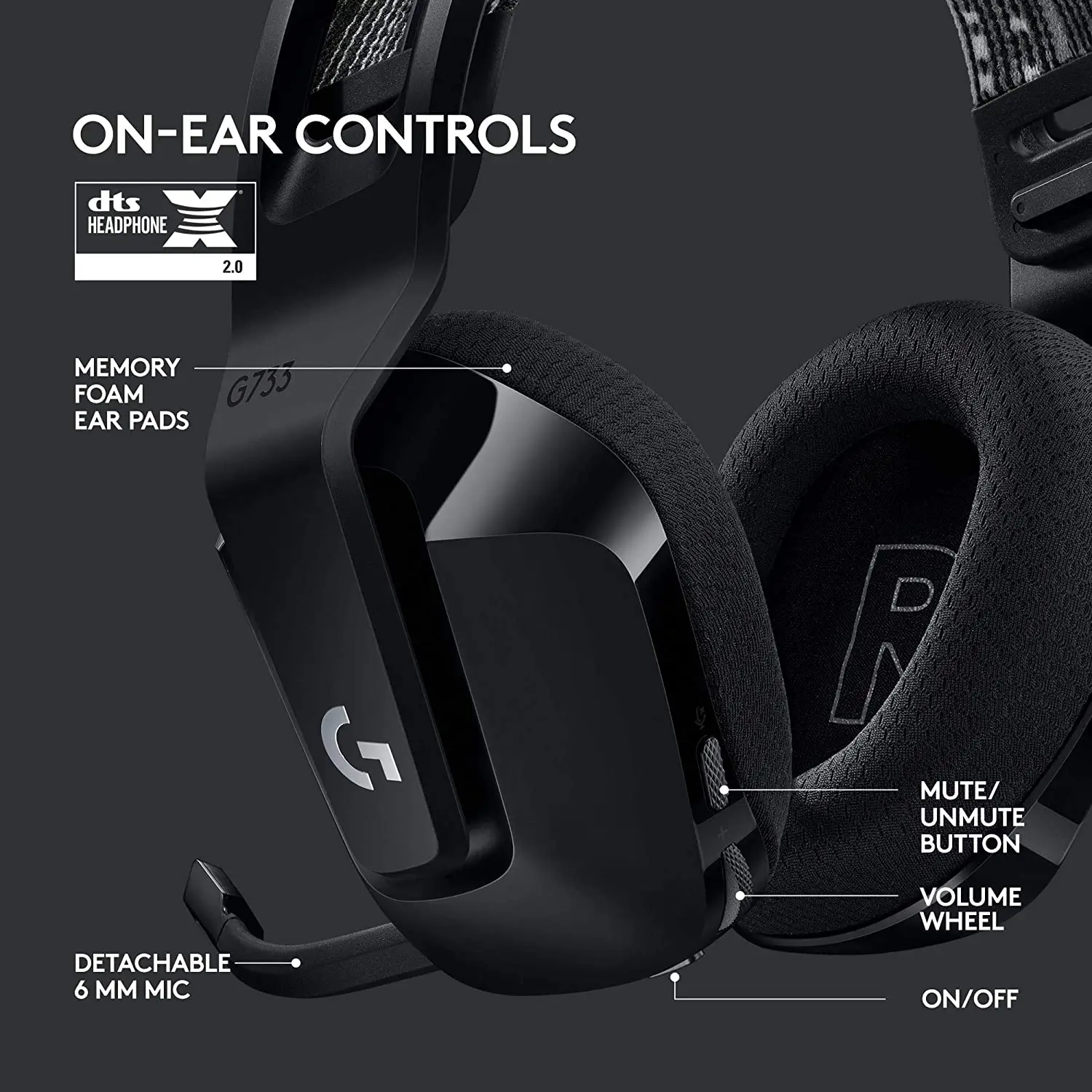The Ultimate Gaming Headsets , The Logitech G733 Lightspeeds Are Simply Amazing
Prices pulled from the Amazon Product Advertising API on:
Product prices and availability are accurate as of the date/time indicated and are subject to change. Any price and availability information displayed on [relevant Amazon Site(s), as applicable] at the time of purchase will apply to the purchase of this product.

If your gaming headset is too heavy, you’ll end up tiring out your head and neck while you compete, stream or just kick back and enjoy a single-player game. The best gaming headsets balance weight and comfort well. The Logitech G733 Lightspeed ($129.99) is the company’s latest attempt at a wireless headset, this time with an emphasis on light, comfortable materials. There’s little metal here — it’s lightweight plastics with comfortable fabrics that look like they would be at home on a pair of yoga pants.
There’s some athleisure to the Logitech G733s. You’re not going to find them in Lululemon, but they definitely seem a bit sportier than some other gaming headphones.
Logitech G733 Lightspeed at Geewiz for R 3 026 Much of this aesthetic comes from the reversible headband. While the unit I used during testing was a black pair of cans with a black “glitch” headband (with white and gray sports), the Logitech G733 comes in other color options, too, including blue and a light lilac color (pictured below), with bands in mint, orange and purple. Additionally, the memory foam ear cups, look and feel like performance grade fabric, perhaps from weight lifting gloves or even a jersey.
I won’t say it’s the most premium build. The frame is made from matte plastic, including the cans and the top frame that holds the suspension band. This makes it light (0.6 pounds), but it doesn’t feel durable like the Logitech G Pro X Lightspeed. The cups don’t spin, which means fewer parts, but also makes it less customizable to fit your head and to pack away. These cans are rigid: It either fits you comfortably or it doesn’t.
You can adjust the size in two ways: by sliding the frame up and down against the cups and by moving the headband between two different size notches. My head is on the bigger side and I prefer to wear my headphones loose, so I wore it as big as possible, which I found to be fairly comfortable.
It’s not all sports; this is definitely a gaming headphone. There are two RGB stripes – one on each cup with two lighting zones that you can control in Logitech G Hub (see Features and Software, below). And if you attach the microphone, which is bendable, the Logitech G733 looks even more gamer-friendly.
All of the Logitech G733 Lightspeed’s hardware controls are on the left can, including the mute button, (which can be configured for other macros or commands), volume wheel and power button. The left ear cup is also where the USB Type-C port for charging is, so you never even need to bother checking the right side of the headset. For anything more advanced, including turning Blue Voice or DTS HeadphoneX 2.0 surround sound, you need to change settings in the software.
If you want to liven your stream up a bit, Logitech is selling some fun, colorful pop filters in packs of four for $9.99. The options include a mustache, thumbs up/down, lips, a star and a heart.

The Logitech G733 Lightspeed proved to be a fine gaming headset, especially when taking advantage of its DTS Headphones X 2.0 surround sound support. For instance, when I played Call of Duty: Warzone, I could hear which way bullets were ringing out from, and, in the gulag, the alarm going off next to my head when it was time to fight for my life.
Not all games get the same benefits with surround sound. Even so, Fall Guys, which is far less reliant on sound cues, still sounded nice to my ears, including the constant cries and coos of the miniature participants getting wacked around.
The 40mm drivers in the G733 Lightspeed are are also great for music. They got louder than I could ever need and produced a nice, clean sound. On Billy Talent’s “I Beg to Differ (This Will Get Better)” the vocals were smooth, and the drums had a nice bounce to them. A single string guitar section wasn’t overpowered by other instruments as they were layered on. I did see some benefits from the Bass Boost in the G Hub software’s advanced EQ settings, as it definitely packed more of a punch.
The bendable, detachable microphone isn’t the best. In the G Hub software, I heard myself play back with a bit of a crackle that I couldn’t quite overcome with settings tweaks, and colleagues told me that I sounded subpar over calls. They said I sounded muddy, as if the microphone wasn’t picking up the full range of sound, or that I was more nasally than usual (I was using the Blue Voice default functionality when this occurred).



